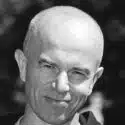Are rider controls ruining racing?
Traction control and stability assistance have made MotoGP safer. At what cost? As Mat Oxley explains, top riders just want to race

The likes of Marc Márquez and Pedro Acosta prefer performance over torque reduction
MILAGRO
This is MotoGP’s 10th year of unified electronics so it’s a good time to look back at the beginnings of the most important rider control of all. MotoGP’s first worthwhile traction control system was created in 2001 by the British-based Team Roberts outfit, owned by three-times MotoGP champion ‘King’ Kenny Roberts.
Why so late, a decade after TC arrived in F1? Because MotoGP budgets are a tiny fraction of F1 budgets and motorcycle dynamics are fiendishly complex: tyre circumferences forever changing during cornering, the usual method of detecting wheelspin complicated by the front wheel lifting off the racetrack during acceleration and so on.
Traction control is as unpopular among motorcycle fans as it is among car fans – because it removes the art of throttle control from racing – but in bike racing it is hugely important for safety because it reduces the likelihood of the highside crash, when the rear tyre spins, then grips, hurling the rider off his/her machine with disastrous consequences.
Indeed, the last three superstars of MotoGP’s pre-TC era – Mick Doohan, Wayne Rainey and Kevin Schwantz – all retired early due to serious injury. Thus the main aim of MotoGP’s first TC system – designed by Team Roberts engineer Tom O’Kane – was to improve safety rather than increase performance.
O’Kane’s first TC unit was fitted to the Team Roberts Proton 500cc two-stroke MotoGP bike, designed and built at the team’s Oxfordshire engineering base. It immediately excited the interest of Japanese manufacturers.
“We did it in co-operation with Yamaha, who were taking a lot of interest in what we were doing,” remembers Irishman O’Kane, who was recently awarded a PhD for his thesis High Fidelity Modelling of Motorcycle Dynamics. “They provided us with an ignition system and we made the TC unit.”
O’Kane’s basic but pioneering system cut ignition sparks, so the engine fired less often, instantly reducing torque delivery, allowing the tyre to regain traction and avoid a highside.
“The TC unit compared front and rear wheel speeds to detect wheelspin,” he adds. “According to the amount of spin the unit detected it supplied the ignition system with a voltage in a range from zero to five volts, which the ignition would interpret and drop sparks in proportion to the voltage supplied.
“When the TC unit supplied zero volts, the ignition wouldn’t drop any sparks; at one volt it would drop one spark in 10; at two volts it would drop one spark in eight; and so on.”
When MotoGP switched from 500cc two-strokes to 990cc four-strokes in 2002, TC soon became much more than a safety device, allowing riders to ride faster, especially when tyres lost grip towards the end of races.
“I tried my first TC system with Honda at the end of 2002,” recalls seven-time MotoGP champion Valentino Rossi. “I went back into the pits and I said, ‘Noooo, with this system everybody can ride the bike.’ And what we had then was 1% of what we had 10 years later.”
When Rossi won his last MotoGP title in 2009 his Yamaha YZR-M1 used a basic form of machine-learning, which used data recorded at each corner – grip levels and so on – to adjust rider controls for the following lap. This was proper space-age stuff. And it wasn’t good for the show, which is why MotoGP rights-holders Dorna stopped electronics development in 2016 by introducing more basic same-for-all software, so manufacturers now use the same Marelli kit and can’t write their own algorithms.
“Now there’s a limited number of maps for traction control and so on, so engineers have to share the maps between different corners,” explains O’Kane. “Maybe the track you’re at has two first-gear corners so you end up using the same map for both, finding a compromise. In other words, you can’t have the engine management doing something different at every point on the track.”
The Marelli system remained essentially unchanged until this year, when MotoGP introduced another electronic safety aid to complement TC. The so-called stability control aims to further reduce highsides by reacting to excessive machine yaw instead of wheelspin.
However, MotoGP’s most talented riders don’t like the new system. They’ve always had a love/hate relationship with TC because while the tech can keep them safe, it also helps lesser talents to close the gap. The stability system continues down this same road.
“You can rely on the controls and the bike is doing everything, so as a rider, I don’t like it,” says 2025 MotoGP champ Marc Márquez. “All the time we are introducing more and more help,” agrees KTM’s Pedro Acosta. “But I think we should go the other way – try to remove [more electronics].”
It’s therefore a fine line to find the right compromise – not only for the championship in general. The fastest riders usually use less TC and stability control because both systems work by reducing torque, which reduces performance. They prefer to ride a path between performance and safety, which is why highsides can still happen.

